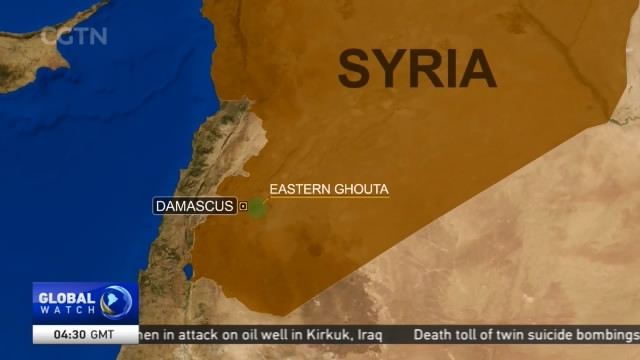
13:56, 25-Feb-2018
Syria Conflict: Eastern Ghouta becomes rebel enclave during war

The UN Security Council adopted the resolution as one of the deadliest air assaults of the seven-year war pounded Eastern Ghouta. For a week, warplanes flown by government forces and their allies pounded the densely populated enclave east of Damascus, the last rebel bastion near the capital. More than 500 people have been killed. CGTN's Gary Anglebrandt gives us more background on this rebel enclave.
"Hell on earth" is how UN chief Antonio Guterres describes Eastern Ghouta. Nearly 400,000 people have lived under a government siege in this rebel enclave near Syria's capital since 2013. They have little food or medicine. The area is completely surrounded by government-controlled territory, and residents are unwilling or unable to flee the deadly siege.
Back in 2011, a primary goal of the rebels was to get to Damascus. And Eastern Ghouta is one of the rebels' largest and most closely-held areas near the capital. Its location allows them to mount attacks on Damascus and its suburbs. The enclave is held by several factions: the Islam Army, al-Rahman Legion and al-Nusra Front, al-Qaeda's Syrian affiliate. Eastern Ghouta has been one of four de-escalation zones since last May. But fighting in and around the region hasn't stopped. Rebels continue to shell Damascus with mortars and rockets, rendering it on several occasions a ghost town.
A short period of relative calm came early in January. That's when an agreement was reportedly reached between the government and the opposition during talks in Vienna. But then heavy fighting and air strikes resumed. The Syrian army resolved to take Eastern Ghouta. And on February 18th, the scale of the offensive became clear. Daily air and artillery strikes, that rebels say are unprecedented, have claimed hundreds of civilian lives.

SITEMAP
Copyright © 2018 CGTN. Beijing ICP prepared NO.16065310-3
Copyright © 2018 CGTN. Beijing ICP prepared NO.16065310-3